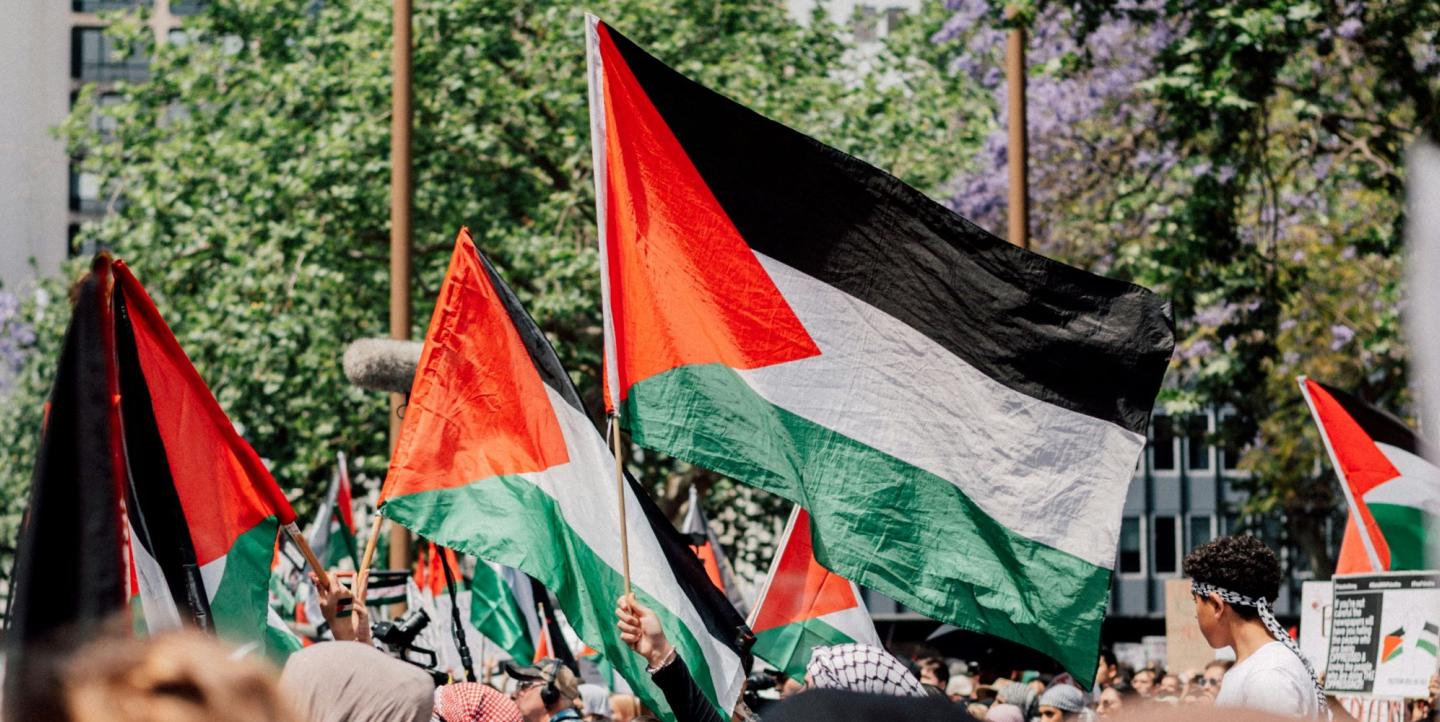Universities across the U.S. erupted into protests in April, with students calling for a ceasefire in Gaza, better protections for pro-Palestinian speech on campuses, institutional divestment from Israel, and more.
The nationwide demonstrations, which began on the campus of Columbia University, have been compared to anti-Vietnam War protests in the 1960s for their similar fervor, aims and organizing tactics. The polarizing nature of the protests, coupled with university reactions – including the use of police to forcibly dismantle student encampments – pushed the demonstrations into the spotlight of national news.
Student journalists, while still building their reporting skills, played an important role in documenting the unrest and its consequences.
I spoke with student journalists at two universities that experienced large-scale protests to learn more about their reporting and how it has affected their own academic and professional goals.
Reporting on their peers
Unbiased coverage can be difficult when a journalist holds a close relationship to their reporting subjects. This was often the case for the student journalists covering the campus protests.
“It's always a little difficult to find the balance of being completely objective when you report and also being like, ‘we're going to go to class on Monday and I'm going to see you,’” said Tyler Davis, a junior at American University and news managing editor of the student newspaper, The Eagle.
“There's the added pressure of minimizing harm but also reporting the truth,” Davis continued. “I don't want to identify anybody [as a member of the protests] and then put them in harm’s way or get them kicked out of school. I also want to give the most accurate representation of the story and of the events happening as possible.”
This was a difficult line for student journalists to walk at times. In November 2023, The Eagle identified the name of a student speaker who had attempted to conceal their identity without communicating with them prior. The student paper updated its ethics code to ensure that reporters communicate with any student wishing to remain anonymous before publishing their name.
Student journalists’ close proximity to the protesters and knowledge of the campus culture brought with it benefits, as well. Their reporting, compared with coverage from major news outlets, was able to offer more of an “insider” look at the protests as students understood them.
Leading news outlets noted this unique position. The Nation described student journalists as the “best equipped'' to cover the protests, able to offer fresh perspectives and insights not addressed in mainstream media’s coverage of pro-Palestine groups on campus.
“NBC can drive in whenever they want to, but like, I live here. I know all of these people and I see them every single day. So it only strengthens those connections,” Davis said. “I think if [student protestors are] going to talk to anybody at all, they'll talk to student journalists first.”
Limited resources and experience
Student journalists contended with a shortage of resources and time to dedicate to their coverage of the protests. This held especially true as the unrest began in the final weeks of the spring semester, close to end-of-year exams. Instead of in the library, student journalists often found themselves reporting on the campus encampments around the clock.
Zoe MacDiarmid, a sophomore at Northeastern University in Boston, and a staff writer for its student paper, The Huntington News, detailed her experience covering the protests while juggling final exams in the same week: “I purposefully went to a building [to study] that was looking out over [the student protest encampment at] Centennial Quad. I was looking out the window and I was watching it, and I really felt a gravitational force to keep going back out.”
Davis laid out similar challenges from their reporting experience at American University in Washington, D.C., where protesters joined with students at other schools to rally at George Washington University, some 40 minutes away on public transportation: “We were either carpooling or people were ubering, and then being down there till three, four or five in the morning was definitely a lot, especially in the middle of finals."
Beyond logistical issues, student journalists are also still learning the ins and outs of reporting. Some, like MacDiarmid, aren’t even studying journalism in school (she’s studying biology).
“I definitely did feel fairly unprepared. But that's the nature of being a student journalist. You're meant to learn as you go and learn by doing things. And I think we're better for it,” MacDiarmid said.
Their futures in journalism
For these student journalists, their experiences covering the protests have fundamentally shaped their perspectives on continuing with journalism down the line.
MacDiarmid shared that although she is not pursuing journalism as her professional career, covering the student movements on her campus pushed her to be more involved with student journalism. “Getting to experience boots on the ground coverage like that, put a log on the fire in my desire to keep working as a student journalist and keep getting better,” she said.
Davis described the moments they shared with their reporting team as the “journalism they make movies about,” and showed what a career in journalism could be. “As I'm having the typical sophomore, junior year, [I was considering], maybe I should change my major,” Davis said.
But covering the campus protests changed their mind. “It really solidified this is what I want to do every single day for the rest of my life,” they said.
Photo by Nikolas Gannon on Unsplash.


